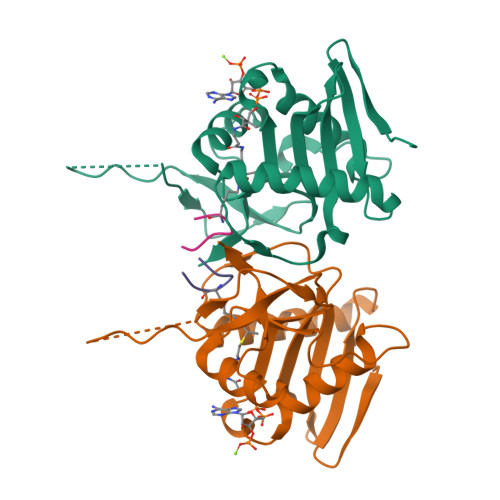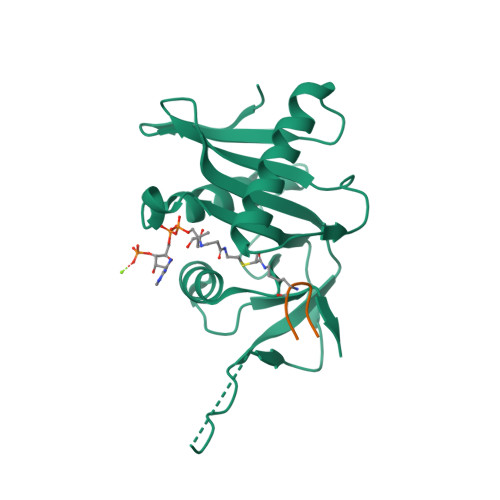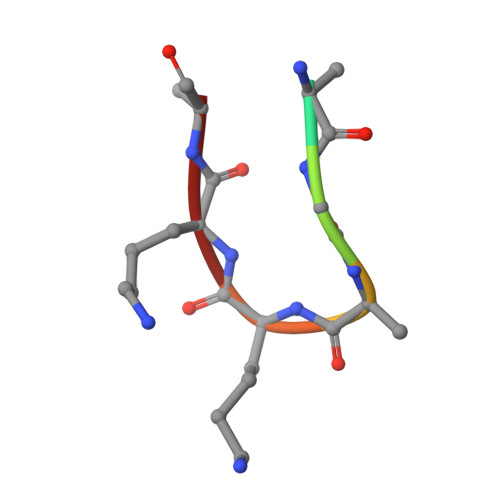Structural Basis of Eco1-Mediated Cohesin Acetylation.
Chao, W.C., Wade, B.O., Bouchoux, C., Jones, A.W., Purkiss, A.G., Federico, S., O'Reilly, N., Snijders, A.P., Uhlmann, F., Singleton, M.R.(2017) Sci Rep 7: 44313-44313
- PubMed: 28290497
- DOI: https://doi.org/10.1038/srep44313
- Primary Citation of Related Structures:
5N1U, 5N1W, 5N22 - PubMed Abstract:
Sister-chromatid cohesion is established by Eco1-mediated acetylation on two conserved tandem lysines in the cohesin Smc3 subunit. However, the molecular basis of Eco1 substrate recognition and acetylation in cohesion is not fully understood. Here, we discover and rationalize the substrate specificity of Eco1 using mass spectrometry coupled with in-vitro acetylation assays and crystallography. Our structures of the X. laevis Eco2 (xEco2) bound to its primary and secondary Smc3 substrates demonstrate the plasticity of the substrate-binding site, which confers substrate specificity by concerted conformational changes of the central β hairpin and the C-terminal extension.
Organizational Affiliation:
Structural Biology of Chromosome Segregation Laboratory, The Francis Crick Institute, 1 Midland Road, London NW1 1AT, UK.






















